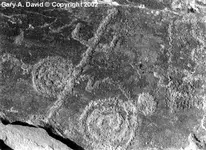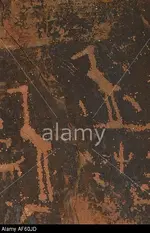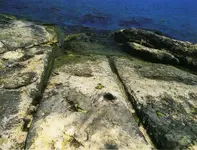Oroblanco
Gold Member
- Joined
- Jan 21, 2005
- Messages
- 7,841
- Reaction score
- 9,876
- Golden Thread
- 0
- Location
- DAKOTA TERRITORY
- Detector(s) used
- Tesoro Lobo Supertraq, (95%) Garrett Scorpion (5%)
Don Jose el Tropical Tramp wrote
 I must have missed your posts on it, for all I saw you post were some interesting maps/data on a site at the bottom of the Atlantic, that MAY be a huge volcanic caldera, and MAY have sunk from above sea level but has no evidence that it ever was above water.
I must have missed your posts on it, for all I saw you post were some interesting maps/data on a site at the bottom of the Atlantic, that MAY be a huge volcanic caldera, and MAY have sunk from above sea level but has no evidence that it ever was above water.
Didn't we go round and round on another topic, some time ago, when I first read about you and Tayopa? You know me, after that episode, I want to see some compelling evidence before passing around the congratulations. Besides, I too have "found" Atlantis, and it is in another location from the deep sea site you have chosen. Or I should say I have found the place that Plato was describing in detail, which may not have been the original Atlantis island. Plato provides plenty of clues to identify this particular place, which he could not have known in such intimate detail if it were under 10,000 feet of water. Besides, remember what he wrote in Critias about the location of Atlantis:
That certainly sounds like the island was not deep under the sea at least in 350 BC. Are you contending that odd spot you pointed out with submarine mountains in a sort of ring, had only sunk just below the sea level by 350 BC, and then sank to 10,000 feet in the time since? How do you explain this? Or have you found some new evidence, perhaps some relic or a section of worked marble ruins dragged to the surface by nets etc that would bolster the case for your proposed caldera? Thanks in advance.
Not Peralta wrote;
OK thanks anyway, as you know I have an interest in all evidence of ancient visitors to America from the Old World, had hoped that perhaps you might have a photo or two of one of these trident symbols. I can hunt up photos online. The trident is also associated with Satan and other aspects like triple sin, three-fold hostility etc. A trident with dolphins would be referring to Syracuse the Greek state, although Poseidon is also depicted with dolphins so that is also arguable.
So amigos as Pandorasbox asked - what should we expect to see and find in Atlantis, when found and brought to light? I know that some will not allow that it could be Atlantis, without the impressive city with rings of land and canals, statues, orichalcum plated walls etc. IMHO these details are embellishments, just as Plutarch accused, so that the real ice-age civilization has been adulterated with Bronze age Minoans (among others) so that it is an unrecognizable, impossible place. Did the Atlanteans have a writing system? What language were they speaking? Thanks in advance,
Oroblanco



Oro, you posted -------- if/when it is found.
Oro, ? I have given you very clear directions to it and explained why and how it subsided in a day or so, and it's present status.
Well it seemed correct at the time sniff. I Need coffee
Didn't we go round and round on another topic, some time ago, when I first read about you and Tayopa? You know me, after that episode, I want to see some compelling evidence before passing around the congratulations. Besides, I too have "found" Atlantis, and it is in another location from the deep sea site you have chosen. Or I should say I have found the place that Plato was describing in detail, which may not have been the original Atlantis island. Plato provides plenty of clues to identify this particular place, which he could not have known in such intimate detail if it were under 10,000 feet of water. Besides, remember what he wrote in Critias about the location of Atlantis:
<from Critias by Plato>. Of the combatants on the one side, the city of Athens was reported to have been the leader and to have fought out the war; the combatants on the other side were commanded by the kings of Atlantis, which, as was saying, was an island greater in extent than Libya and Asia, and when afterwards sunk by an earthquake, became an impassable barrier of mud to voyagers sailing from hence to any part of the ocean.
That certainly sounds like the island was not deep under the sea at least in 350 BC. Are you contending that odd spot you pointed out with submarine mountains in a sort of ring, had only sunk just below the sea level by 350 BC, and then sank to 10,000 feet in the time since? How do you explain this? Or have you found some new evidence, perhaps some relic or a section of worked marble ruins dragged to the surface by nets etc that would bolster the case for your proposed caldera? Thanks in advance.
Not Peralta wrote;
Oro Amigo, I don't really know,but even if I did they would be in storage,but there should be some on the net.thanks.np
OK thanks anyway, as you know I have an interest in all evidence of ancient visitors to America from the Old World, had hoped that perhaps you might have a photo or two of one of these trident symbols. I can hunt up photos online. The trident is also associated with Satan and other aspects like triple sin, three-fold hostility etc. A trident with dolphins would be referring to Syracuse the Greek state, although Poseidon is also depicted with dolphins so that is also arguable.
So amigos as Pandorasbox asked - what should we expect to see and find in Atlantis, when found and brought to light? I know that some will not allow that it could be Atlantis, without the impressive city with rings of land and canals, statues, orichalcum plated walls etc. IMHO these details are embellishments, just as Plutarch accused, so that the real ice-age civilization has been adulterated with Bronze age Minoans (among others) so that it is an unrecognizable, impossible place. Did the Atlanteans have a writing system? What language were they speaking? Thanks in advance,
Oroblanco












 )
)